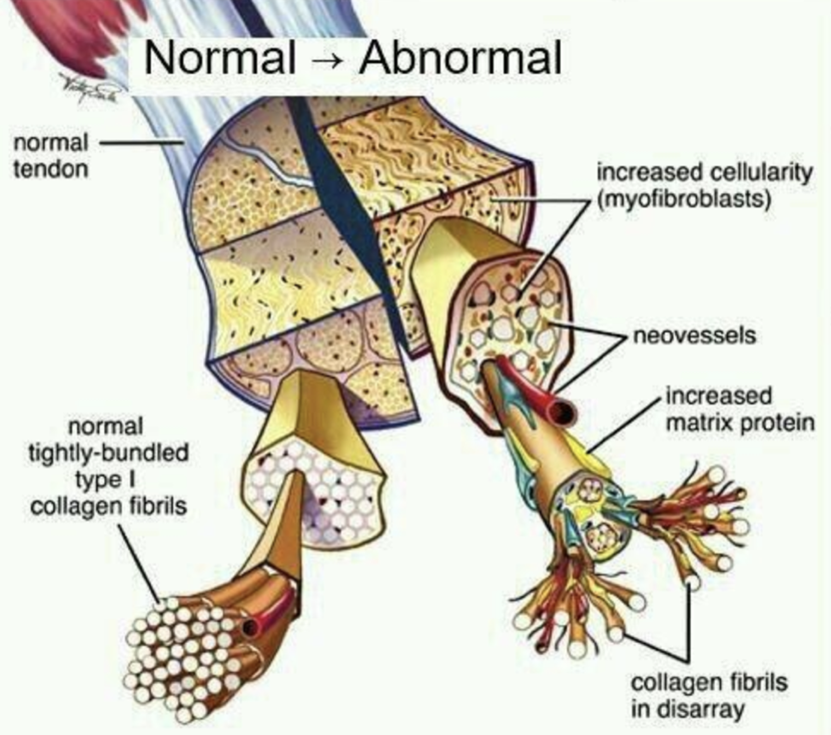
There are a variety of tendon rehab models which aim to provide a framework to improve and enhance rehab after a tendon injury. Below we will go through the Cook- Perdum model.
Tendons respond best to a 4-stage loading program- Stage 1 Isometric Exercises, Stage 2: Isotonic Exercise, Stage 3: Energy Storage Exercise & Stage 4: Sport Specific Energy Storage and Release Exercise (Functional activity specific). A start and end to the program should also be decided depending upon the functional level and capacity of the individual (start) and should end at the functional level that is required for the individual to return to desired level of activity.
Stage 1: Isometric Exercise
Exercises in which the muscle tendon complex remains relatively the same length throughout the contraction including no gross joint motion. These are in 2 different modes, Holding/ resisting an impacting force and pushing/ working against a stable/immovable object. Isometric exercise is considered safe and can have an analgesic effect as quickly as 7- 10 days – analgesic meaning pain relief.
Stage 2: Isotonic Exercise
Commences once pain has settled and/or is stable at a low level. Exercise is focused on slow and heavy concentric and eccentric focus. The goal is directed at improving the strength in the musculotendinous unit. This stage will be best performed with a slightly longer eccentric component. For example, the concentric portion may last 3 seconds, whilst the eccentric portion may last 4 seconds. It is important we progress in very small increments as we return towards our required capacity, as too quick of a progression can result in tendon disrepair and an extended rehabilitation process.
Stage 3: Energy Storage Exercise
Once muscles are stronger the tendon can be loaded with energy storage exercises. This involves faster eccentric components and slower concentric components. In this stage, the aim is to increase the concentric velocity progressively in very small steps.
Stage 4: Sport Specific Energy Storage and Release exercises
This stage involves functional movements for the patient, meaning specific exercises that can be introduced in a clinical setting which mimic movements they were able to do pre injury. This can be completed at a frequency of 2-3x per week. Once tolerated they can return slowly by increasing work capacities in a controlled environment/ manner, which is closely overseen by the practitioner. Once they can demonstrate no pain during or after these increases in work capacities and they’re able to complete all tasks required for work (and her ADL’s) pain free during and after they are cleared to return to full capacity.



